Rhodds Farm: From open space to stunning country garden in under 12 years
Richard and Cary Goode have carried off something almost miraculous at this lovely spot in Herefordshire – and they've done it in barely more than a decade.


Rhodds Farm, tucked away down a tiny roadway – the splendidly named Jack’s Ditch Lane – deep in the north Herefordshire countryside, is a surprise and one that teaches a number of valuable lessons. Richard and Cary Goode came here in 2004, when there was no garden and the house was still very much an unpretentious Victorian farmhouse.
Both Mr and Mrs Goode work from home, Mr Goode dealing in Russian aerobatic aircraft, his wife designing gardens, and as if that wasn’t enough, they also own and run a small hotel (and garden) in Sri Lanka.
So the first lesson taught by the fine garden here now is how to create and maintain one that’s complex, varied and interesting, despite such busy lives. An extension of that lesson is how to make such a garden also one that suits – and copes with the difficulties of – the site on which it is made.
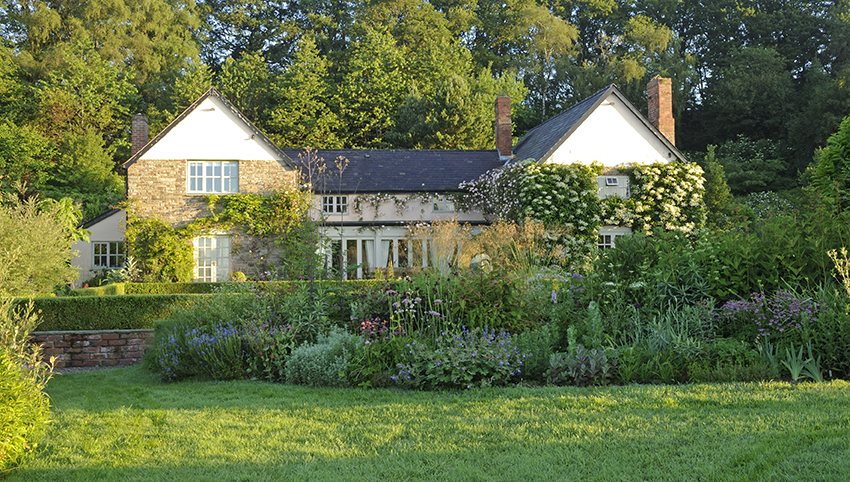
Because difficulties there certainly were. Where there was soil, it was sticky, stony boulder clay and, around the house, there was no topsoil at all (Mrs Goode wonders whether a previous owner could have sold it). To the north of the house, there was an ugly tarmac car park; the whole site is long and thin. A long privet hedge separated pasture to the south from the garden to be; northwards lay a wooded (and originally bramble-filled) hillside.
Essentially, what Mrs Goode aimed to do was, first, remove any solid boundaries between garden and landscape (hence to the south, for example, privet hedge out, park railings in) and then to create a garden ‘of two halves’: relatively formal immediately around the house, but increasingly informal as it spreads out and away from it.

Even in the formal areas, she insists that, as the priority was to preserve the views, this could not be a garden of ‘rooms’, so hedges are kept to an absolute minimum. Instead, the relatively formal garden is one of ‘areas’, in which one section merges gently into – and is visible from – the next.
Remembering both the pressures of their busy lives and the vast expanses of the surrounding rolling Herefordshire landscape, the sorts of plants Mrs Goode uses as her ‘core palette’ are ‘thugs that are happy on this site’, such as Euphorbia griffithii Fireglow, Phlomis russeliana, Symphytum caucasicum or its even more vigorous second cousin Trachystemon orientalis, ‘all of which came from a tiny scrap I begged from Mallet Court Nursery,’ she explains with a wry smile. What’s more, she uses them in ‘sheets’, because ‘that sort of big planting echoes this big landscape’.
Exquisite houses, the beauty of Nature, and how to get the most from your life, straight to your inbox.

Even in the most formal areas, planting in sheets is still frequently the rule. To the east of the house, for example, there is now a splendid brick-built, tower-like ornamental dovecote, its bulk designed to balance that of the barn, the diamond-shaped holes in its walls echoing those in the structure. The same diamond pattern is used in the pool at the dovecote’s foot and in the central box-edged bed in the main formal rectangular lawn beside it.
The central formal beds on the dovecote’s other side are edged with a block planting of Alchemilla mollis from which rise the dramatic flowers of masses of Iris sibirica Silver Edge. This makes both practical and aesthetic sense: on the one hand, it saves labour; on the other, the restricted palette of plants, used in large groups, makes a greater visual impact than a wider palette used in smaller groups or as individual specimens.
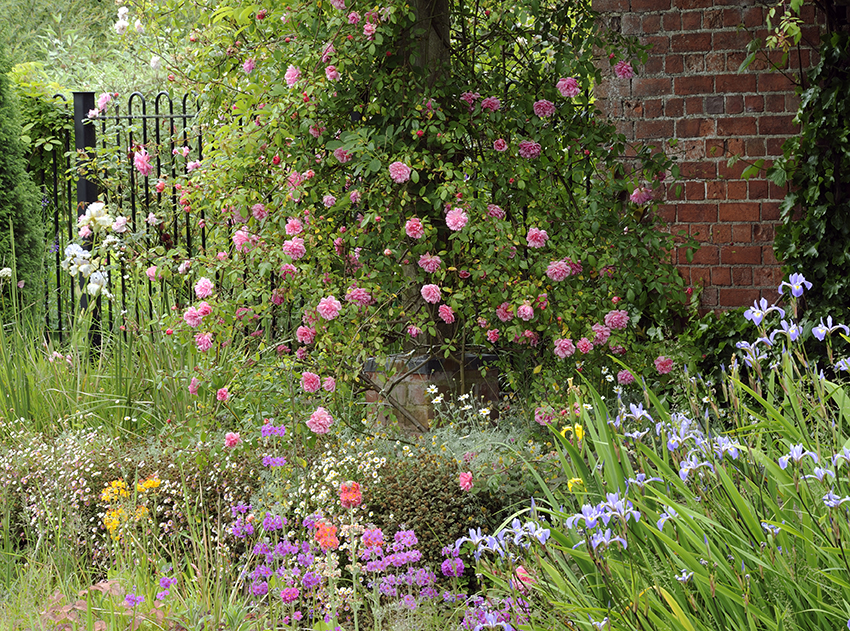
Between that area and the main lawn is the garden’s only real herbaceous border. It is the only one for the obvious reason that that form of gardening is anything but labour-saving.
Here, however, Mrs Goode has indulged herself in a rich spectrum of purples, blues, reds and oranges. The plants used include alliums, poppies, heleniums, asters, aconitums and a rudbeckia she particularly recommends, R. subtomentosa Henry Eilers, because, unusually, it is ‘small and delicate’ yet ‘stays upright. It doesn’t need staking’. She adds: ‘I hate staking because, however well it’s done, the result never looks natural and relaxed.’
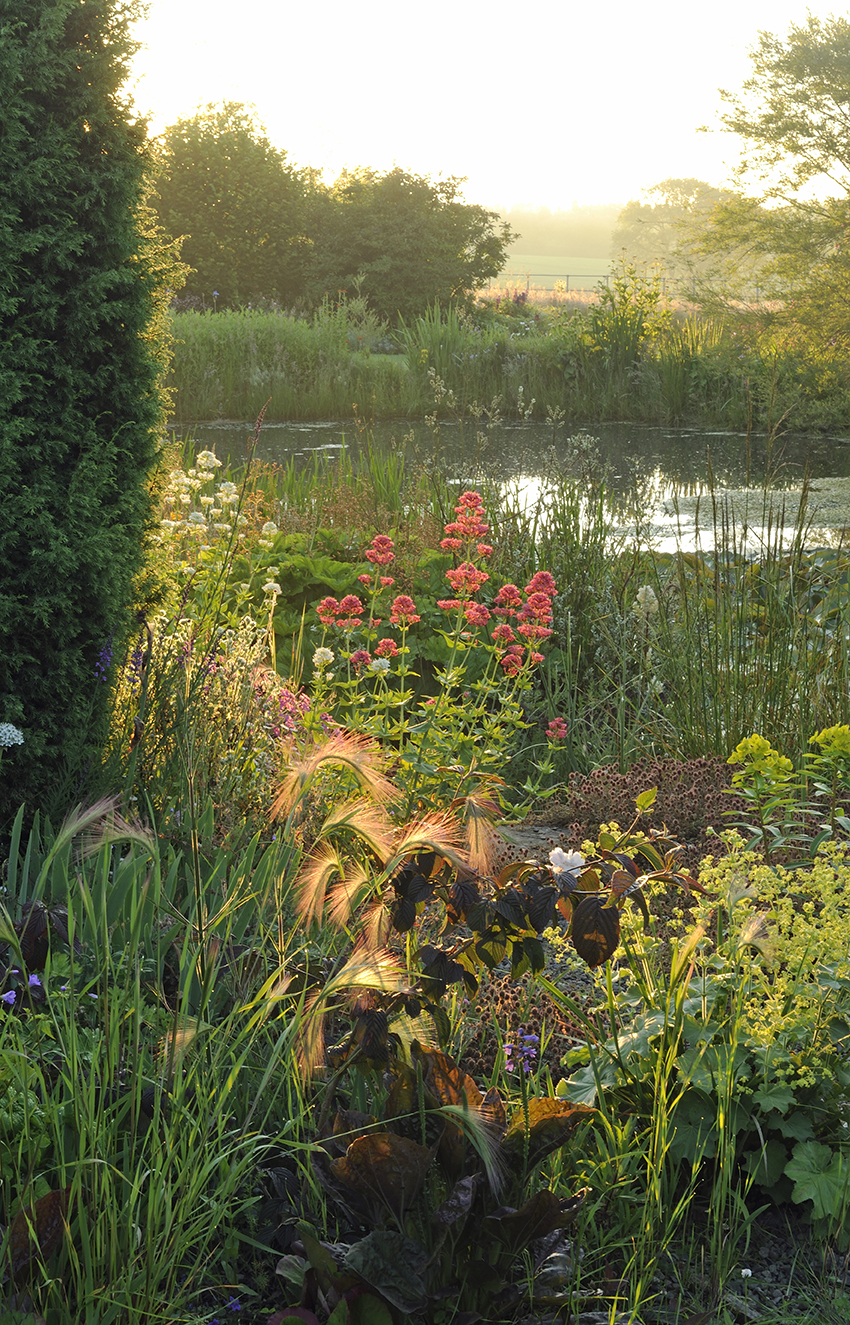
Time-saving and coping with the demands of the site have combined to determine what happens between the formal lawn and the southern boundary, where only a seriously narrow strip of land was left with which to work. Mrs Goode’s solution has been a quartet of mixed island beds, with balancing box ‘mounds’ between them to anchor the area and provide some interest during winter.
Between here and the barn is the first of the garden’s two main stretches of water, a pond essentially for wildlife, although with some discreet ornamental planting around its edges. Beyond, a path lined with the rose Sander’s White and a variety of clematis leads to the vegetable garden, although Mrs Goode cheerfully confesses that, in fact, ‘I’m keener on fruit than on vegetables’.

Beyond that again, it becomes difficult to be sure whether you’re in garden or wood, until, eventually, you emerge on the edge of a sizeable lake (which the Goodes insist on calling a duck pond). There is ornamental planting here, but no beds as such. Instead, Mrs Goode simply ‘plants into the wild’.
In this area, beyond a new planting’s first year, she does very little weeding, so plants either survive the competition or they don’t. Once more, she gardens in such a minimal way for two reasons, one aesthetic, one eminently practical: ‘I don’t want it to look cultivated and, anyway, I don’t have time.’

The same is true in spades in the 13 acres of the woodland garden proper, where paths wind up the hillside to reach viewpoints from which you look out to the Welsh hills on one side and Shropshire on the other.
Once Mr Goode had cleared this whole area of brambles, a network of paths was created, although most are concentrated on the areas nearer the house, which is also where the majority of the ornamental planting is to be found, mostly in the form of shrubs such as cornus, magnolias and species roses. Mrs Goode is currently very excited by – and is keeping a keen eye on – a range of spontaneously occurring seedlings from the climbing rose Cedric Morris.
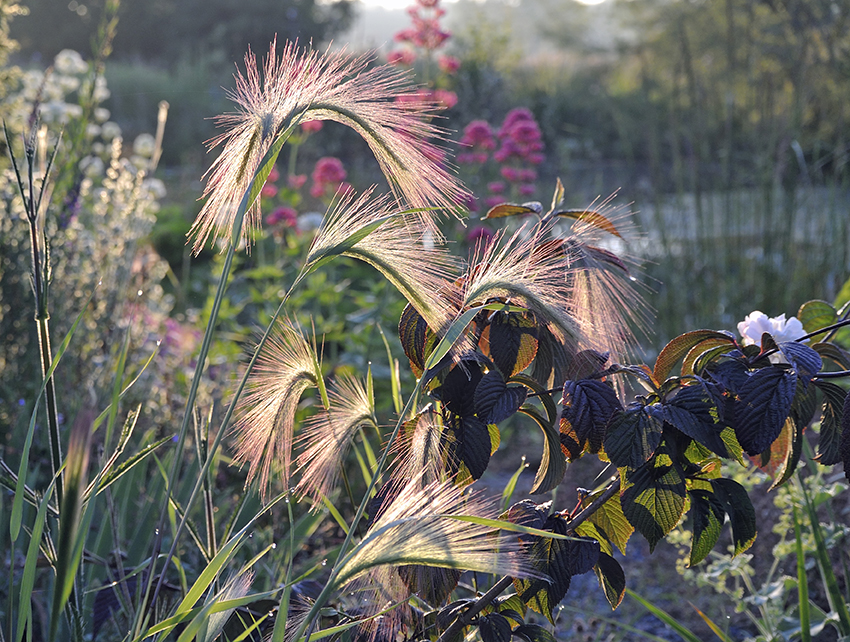
These lower levels appropriately include one path known as the Stairway to Heaven, which is lined with scented shrubs and acquired its name because it leads to the Goodes’ pet cemetery ‘and so, hopefully, to Paradise’. Rhodds Farm may not be paradise, but it’s a very good 21st-century approximation.
Rhodds Farm is open as part of the NGS scheme and June's Gardens in the Wild Festival – see more at www.gardensinthewild.org. Groups can email goode@russianaeros.com to organise separate appointments while www.rhoddsfarm.co.uk has details of self-catering accommodation on the site.
Country Life is unlike any other magazine: the only glossy weekly on the newsstand and the only magazine that has been guest-edited by His Majesty The King not once, but twice. It is a celebration of modern rural life and all its diverse joys and pleasures — that was first published in Queen Victoria's Diamond Jubilee year. Our eclectic mixture of witty and informative content — from the most up-to-date property news and commentary and a coveted glimpse inside some of the UK's best houses and gardens, to gardening, the arts and interior design, written by experts in their field — still cannot be found in print or online, anywhere else.
-
 A slick looking off-roader that's a far cry from its rustic rural roots — Volvo EX30 Cross Country
A slick looking off-roader that's a far cry from its rustic rural roots — Volvo EX30 Cross CountryThe latest iteration of Volvo's Cross Country is flashy, fast and stylish. But is that what a Volvo Cross Country is supposed to be?
-
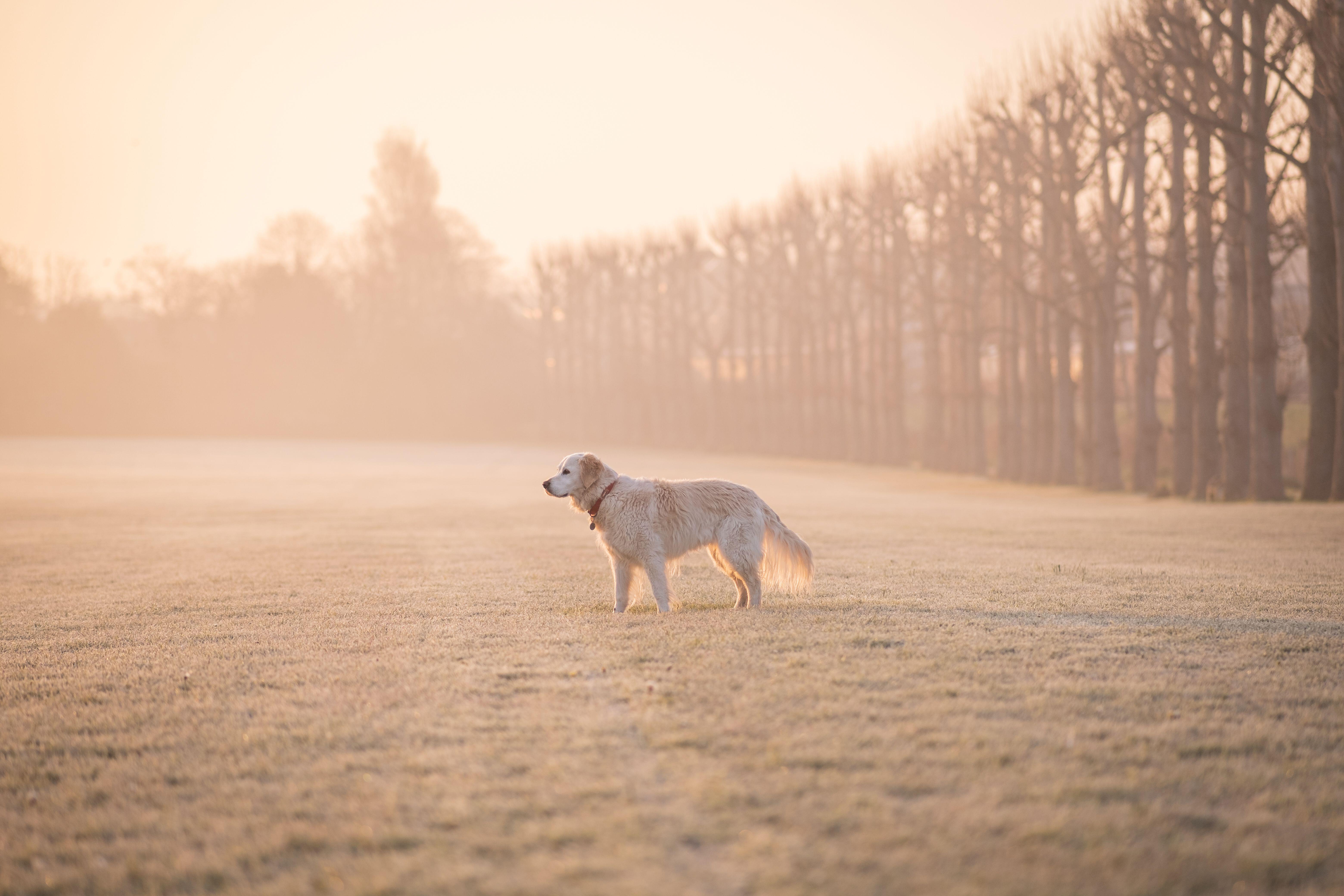 The golden retriever: The world’s most likeable dog almost didn’t exist at all
The golden retriever: The world’s most likeable dog almost didn’t exist at allThey’ve been popping up everywhere this week — on the Tube, at Christmas parties and in the news — so it feels like the perfect moment to talk about the dog breed we’re lucky to have.
-
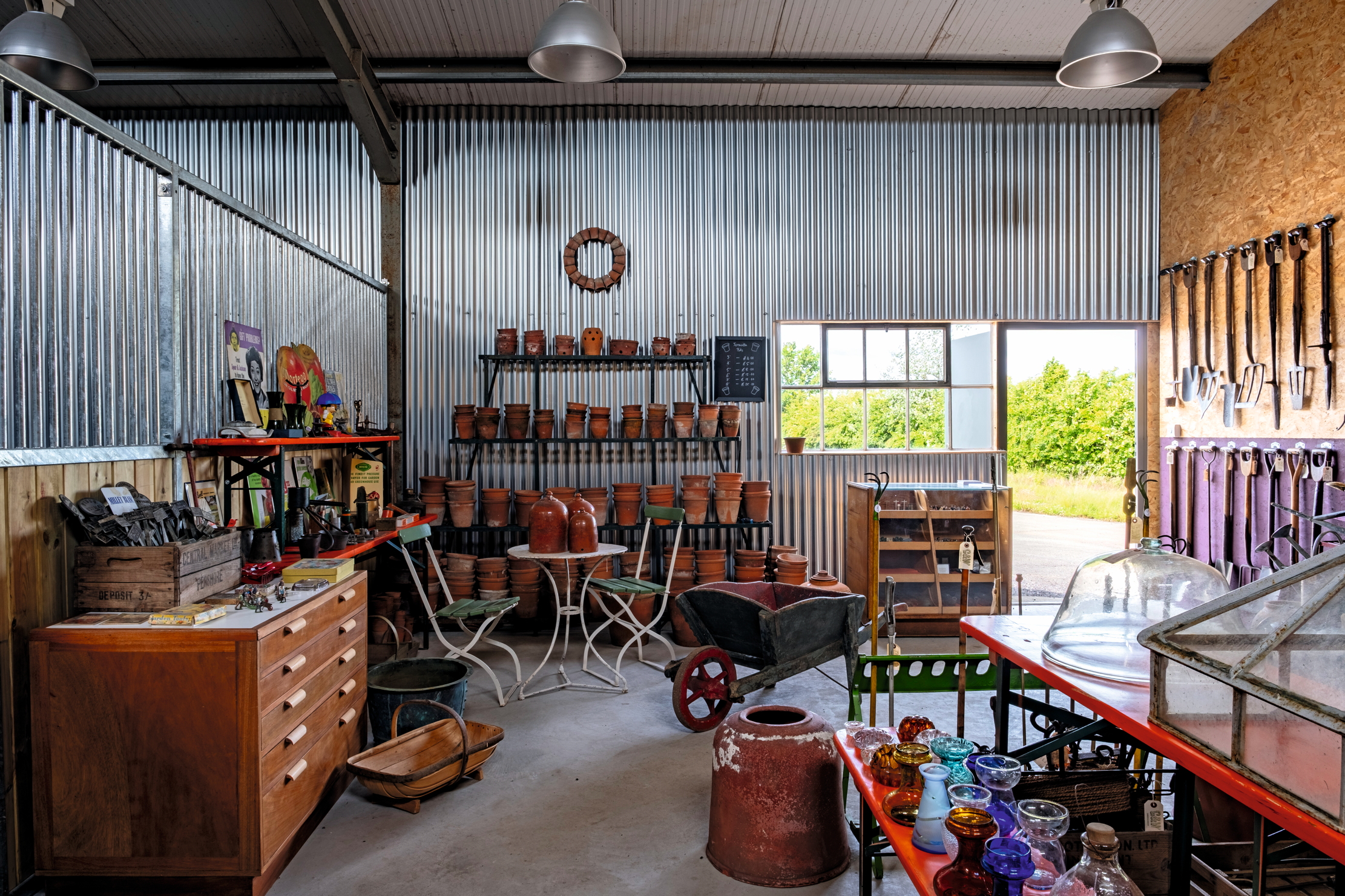 When it comes to making the perfect garden tool, the past has all the answers
When it comes to making the perfect garden tool, the past has all the answersMary Keen visits Garden & Wood, the mecca for dedicated gardeners who prefer using tools made in the 1940s
-
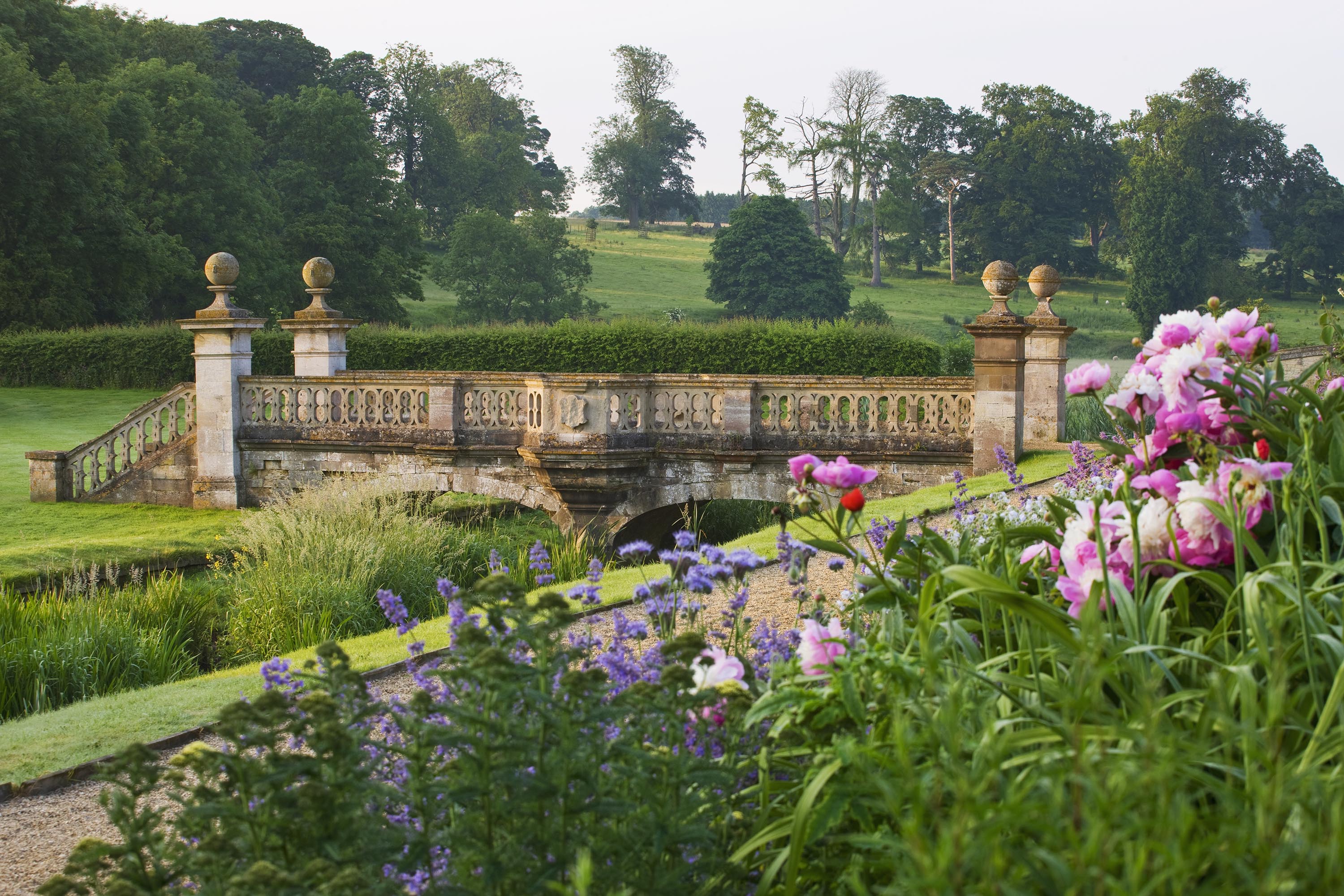 'A dream of Nirvana... almost too good to be true': The sweet peas of Easton Walled Gardens, and how you can replicate their success at home
'A dream of Nirvana... almost too good to be true': The sweet peas of Easton Walled Gardens, and how you can replicate their success at homeUrsula Cholmeley, who has spent 25 years restoring Easton Walled Gardens, recommends sowing sweet peas now for stronger plants that will better withstand the weather.
-
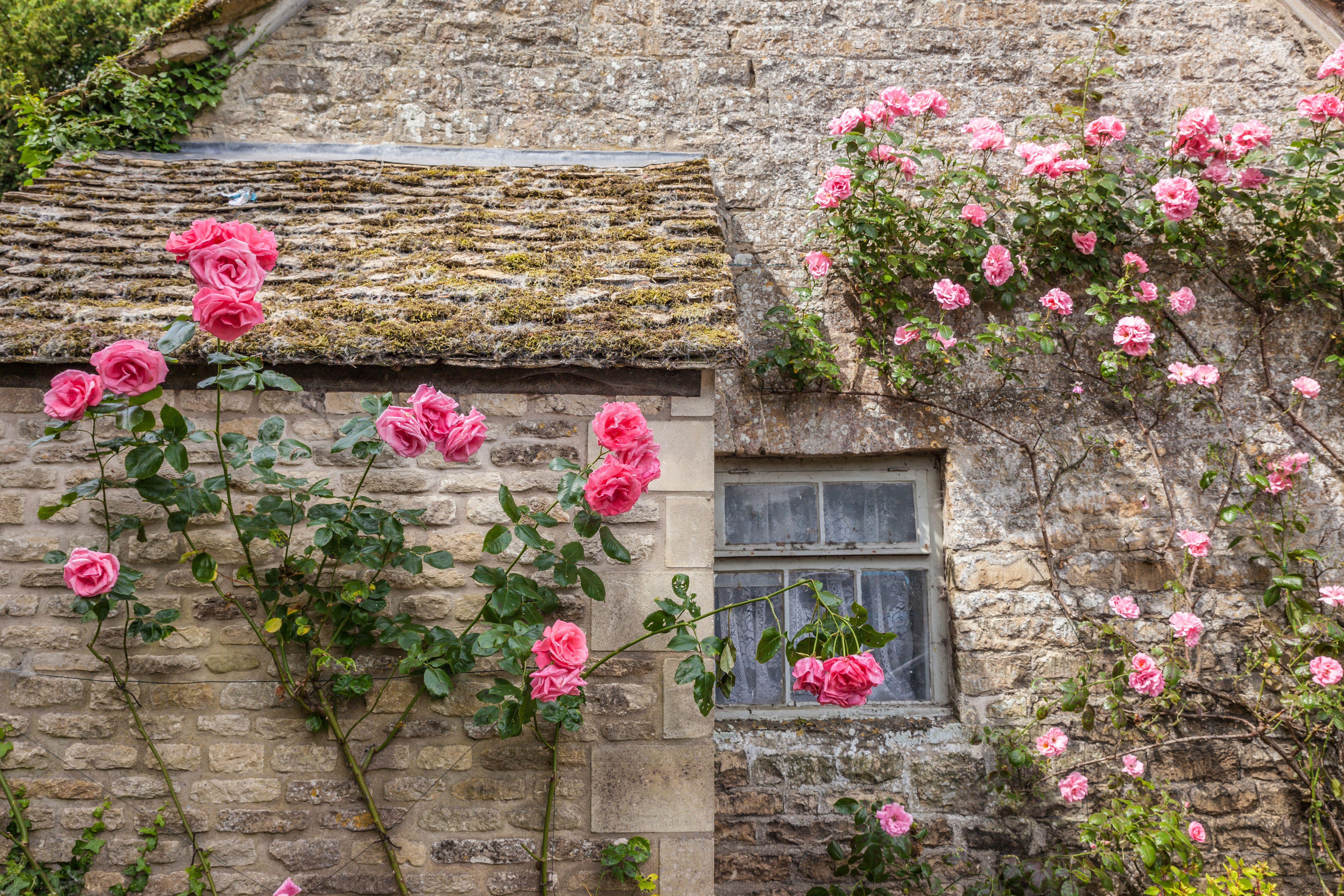 How to choose the perfect rose this bare root season
How to choose the perfect rose this bare root seasonLooks can be deceiving: bare root roses are hardier and more sustainable than potted ones, says Tabi Jackson Gee, who moved to a cottage in Wiltshire and went about finding the perfect plant. You just need patience.
-
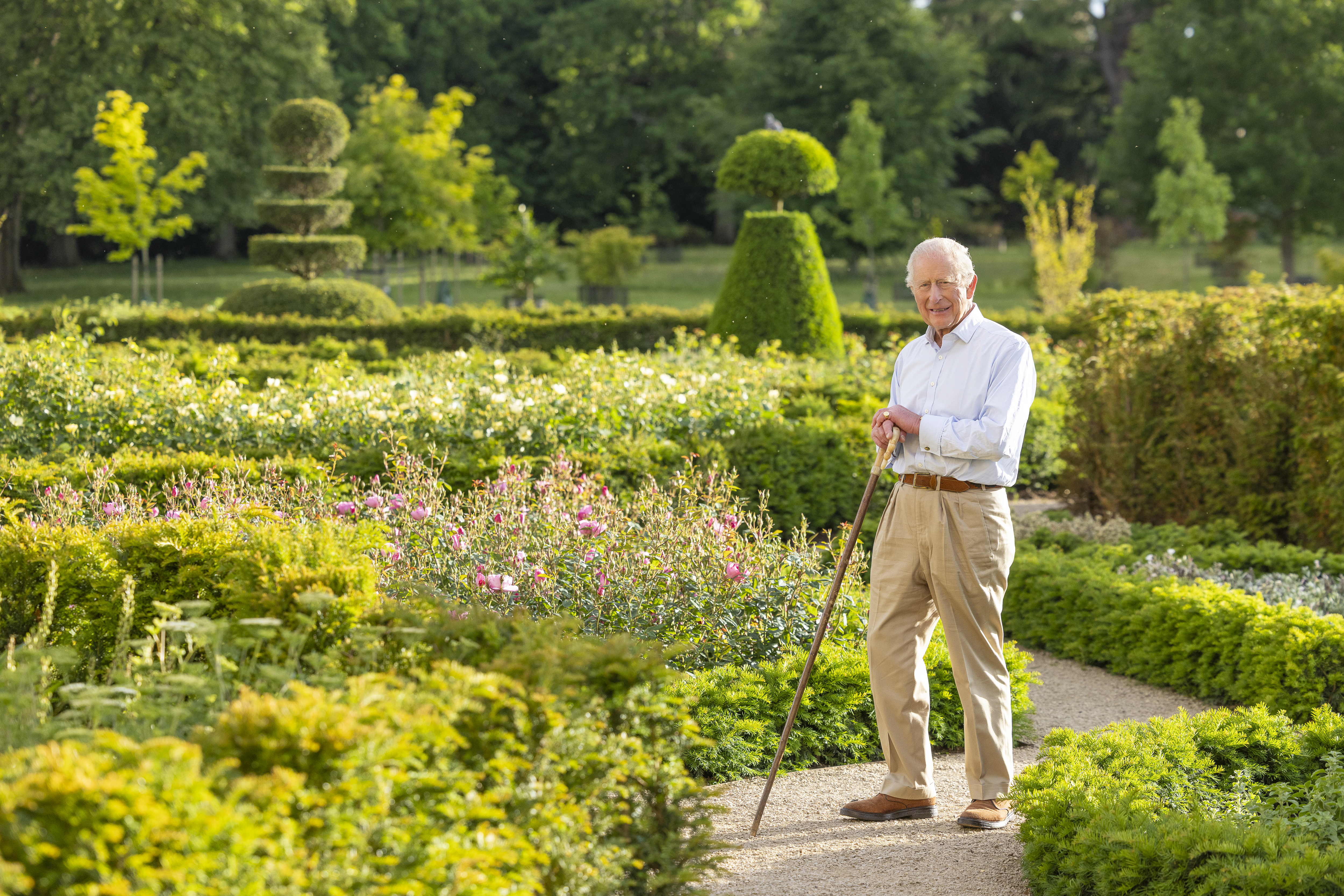 Exclusive: The King's remarkable resurrection of the gardens and parkland at Sandringham
Exclusive: The King's remarkable resurrection of the gardens and parkland at SandringhamThe King took over the running of the 21,000-acre Sandringham estate in 2017 — and in the last three years has transformed it beyond recognition.
-
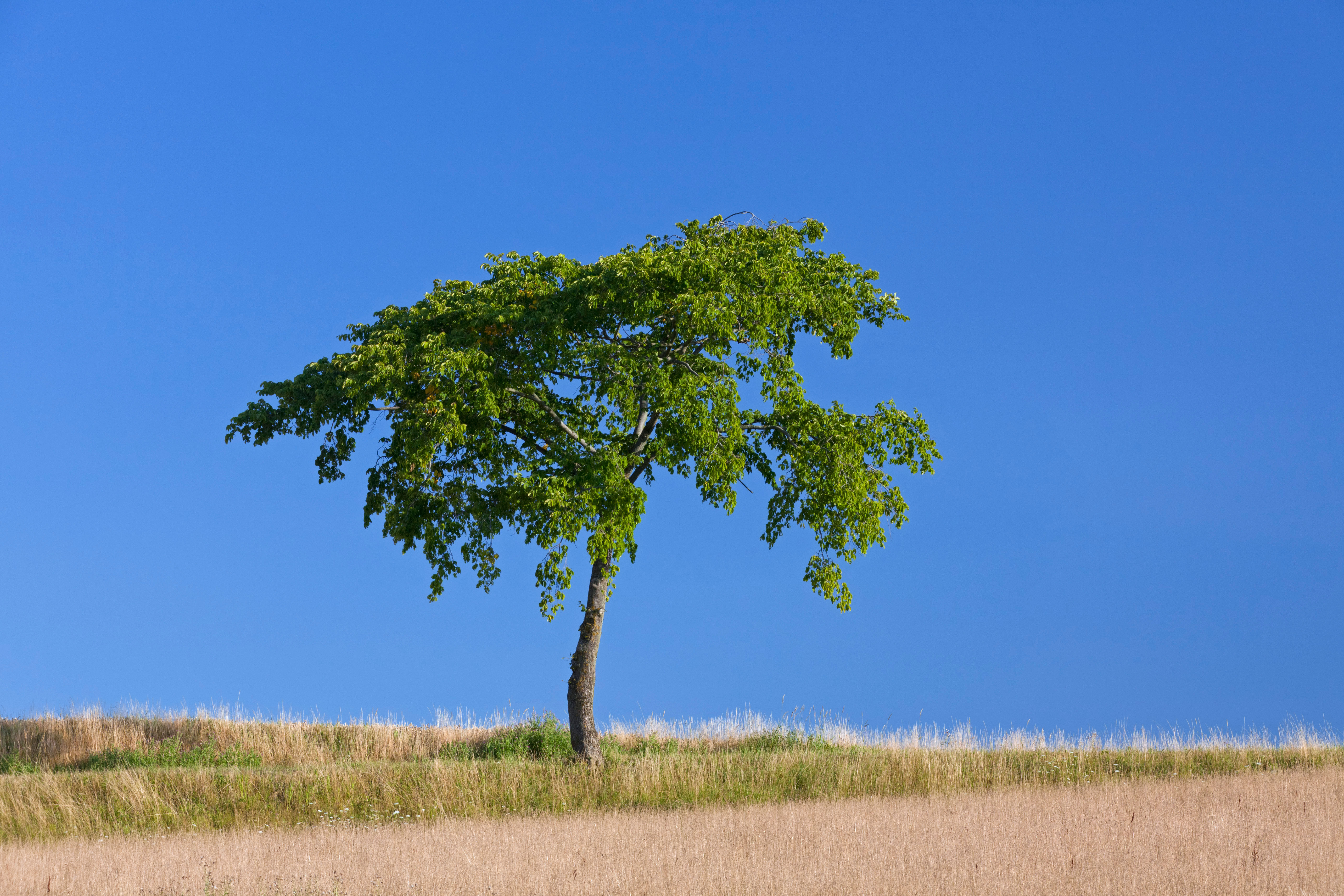 The trees that are as fine to eat as they are to look at
The trees that are as fine to eat as they are to look atMark Diacono doesn't grow many trees for the sake of the bounty they provide — but these are the notable exceptions.
-
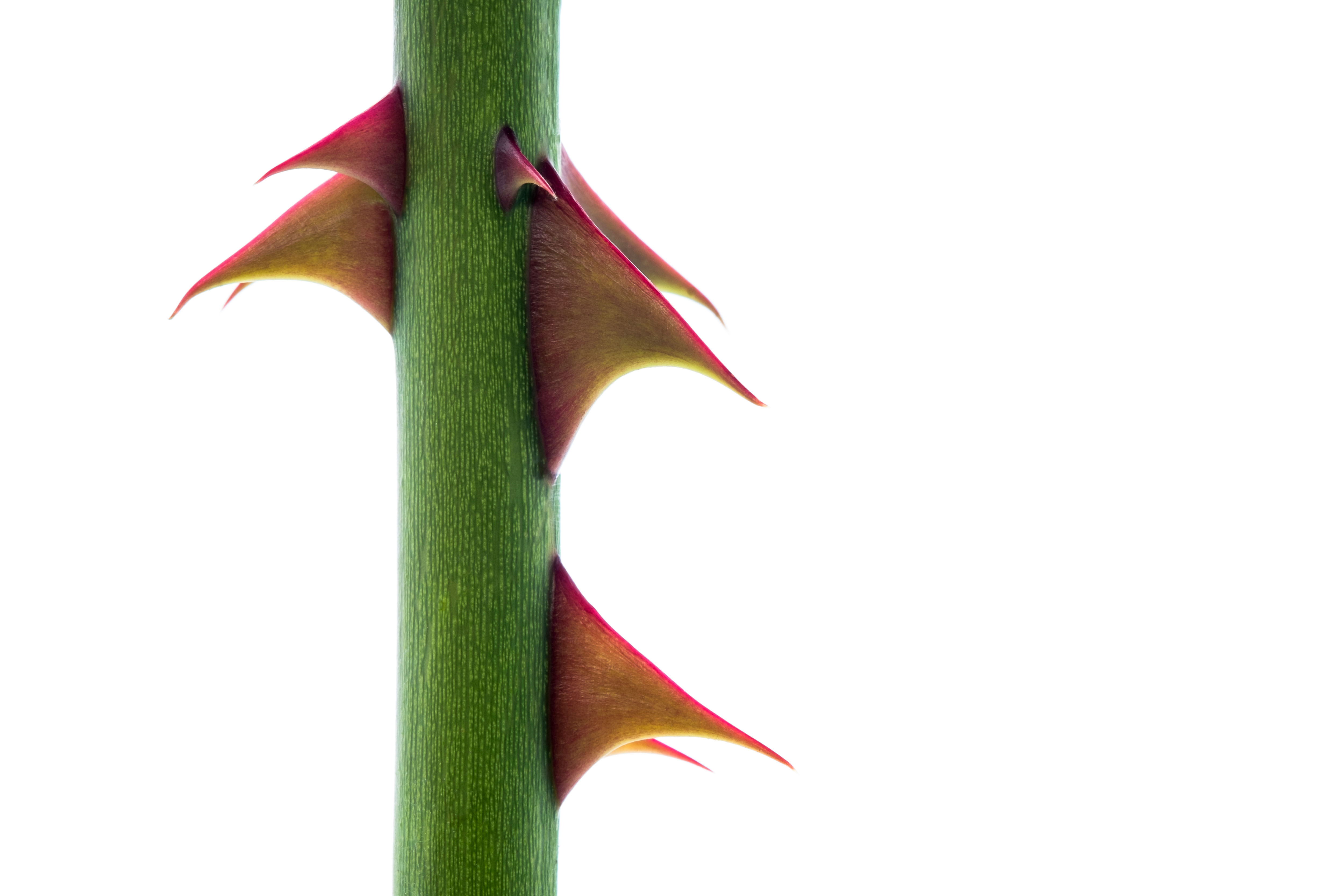 Bothered by brambles and snagged by sow thistles, but what is the point of all this thorny microaggression?
Bothered by brambles and snagged by sow thistles, but what is the point of all this thorny microaggression?Nature’s spiky deterrents — thorns, spines and prickles — may be quick to catch us out, but they can also prove to be a useful ally.
-
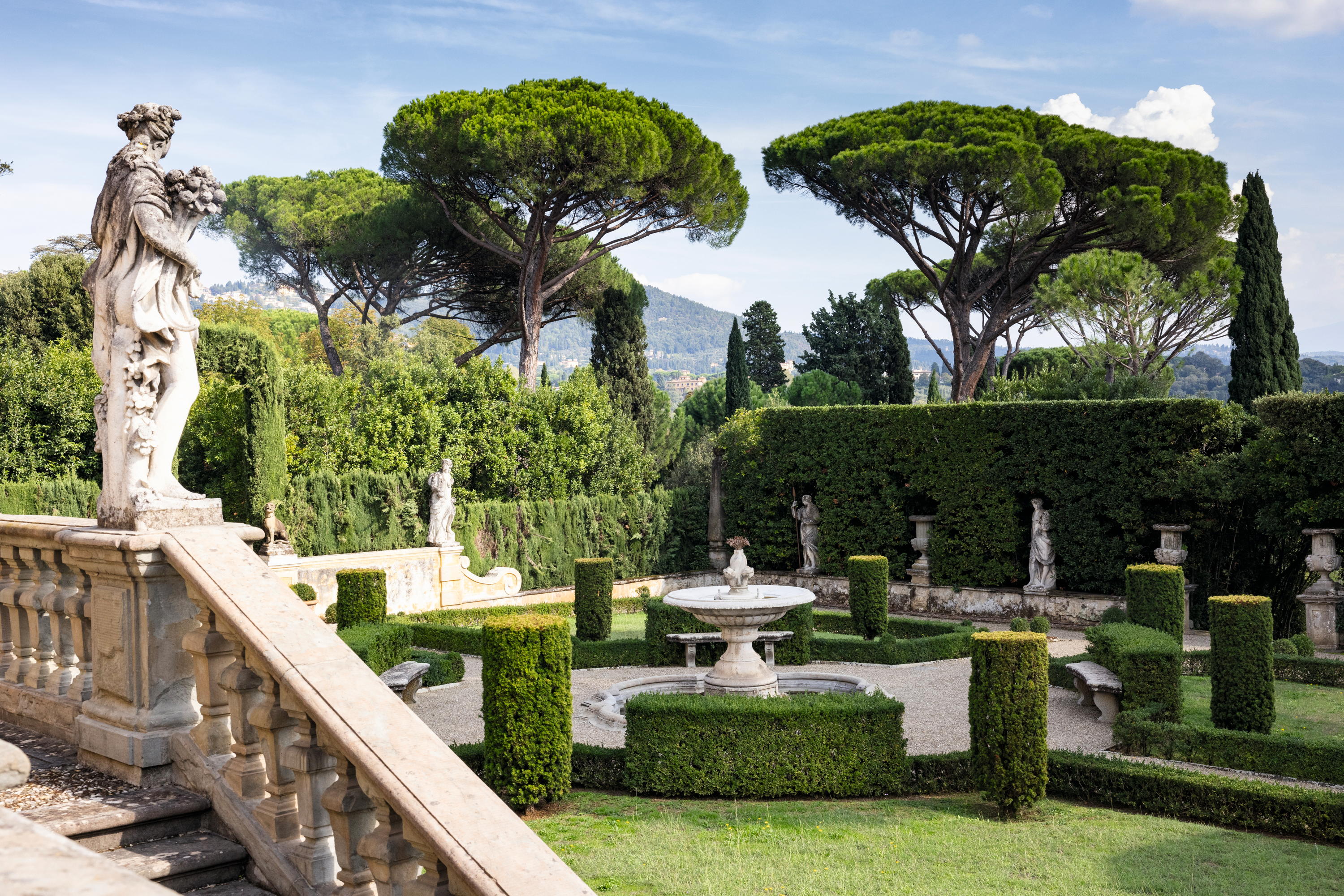 The Tuscan gardens where the English and Italian traditions come together, and Yorkshire rhubarb grows happily beside spectacular citrus
The Tuscan gardens where the English and Italian traditions come together, and Yorkshire rhubarb grows happily beside spectacular citrusNick Dakin-Elliot, who gardens in Tuscany, is still moved by the Italian hilltop gardens that command some of the most beautiful views in the world.
-
 'My family wore wool at a time when everyone else had cast it off in favour of manmade fabrics': The knitwear pioneer who is one of David Beckham's countryside champions
'My family wore wool at a time when everyone else had cast it off in favour of manmade fabrics': The knitwear pioneer who is one of David Beckham's countryside championsJulie Harding speaks to Rachel Carvell-Spedding the founder of British knitwear brand Navygrey, and one of David Beckham's countryside champions.
